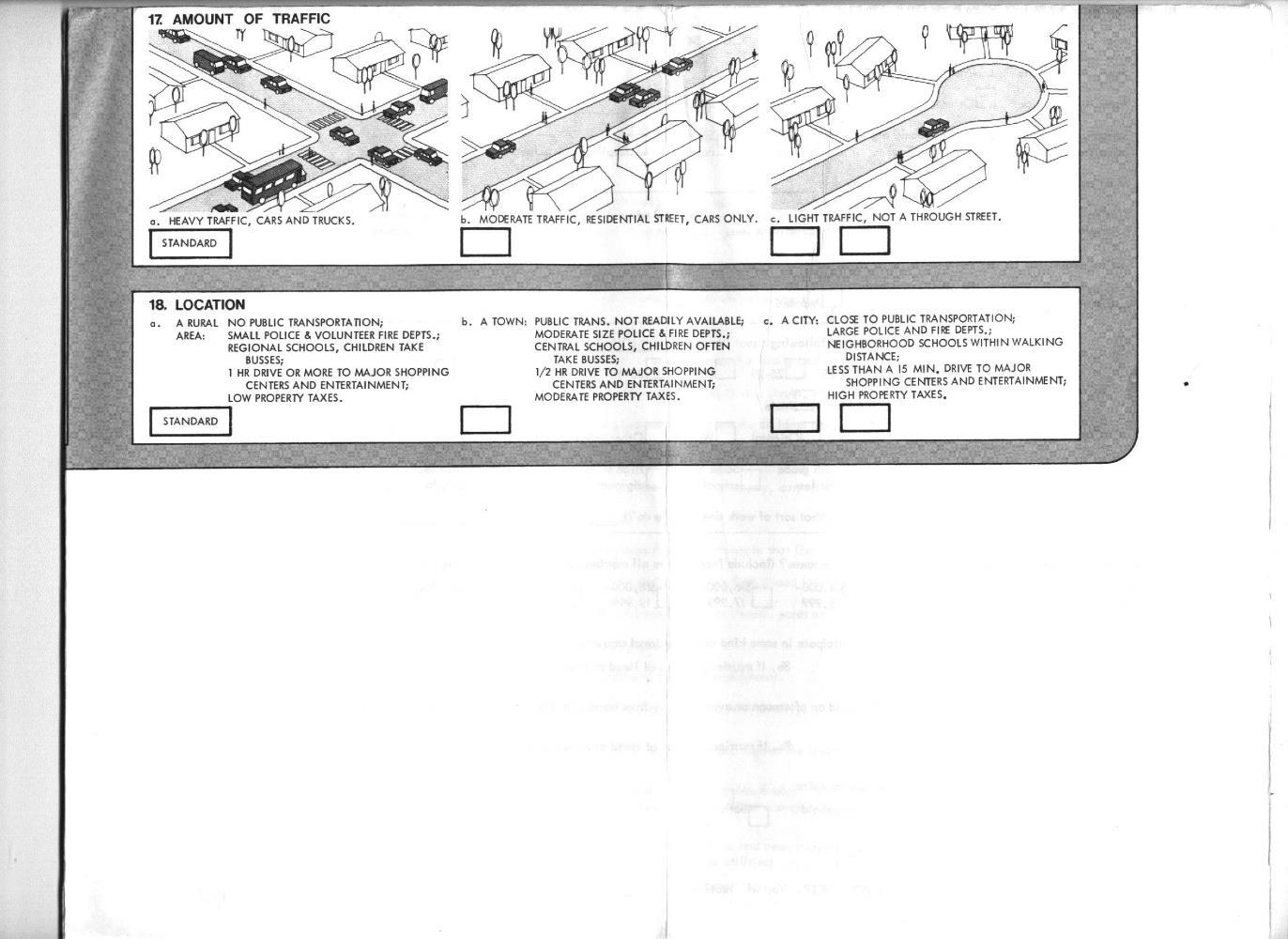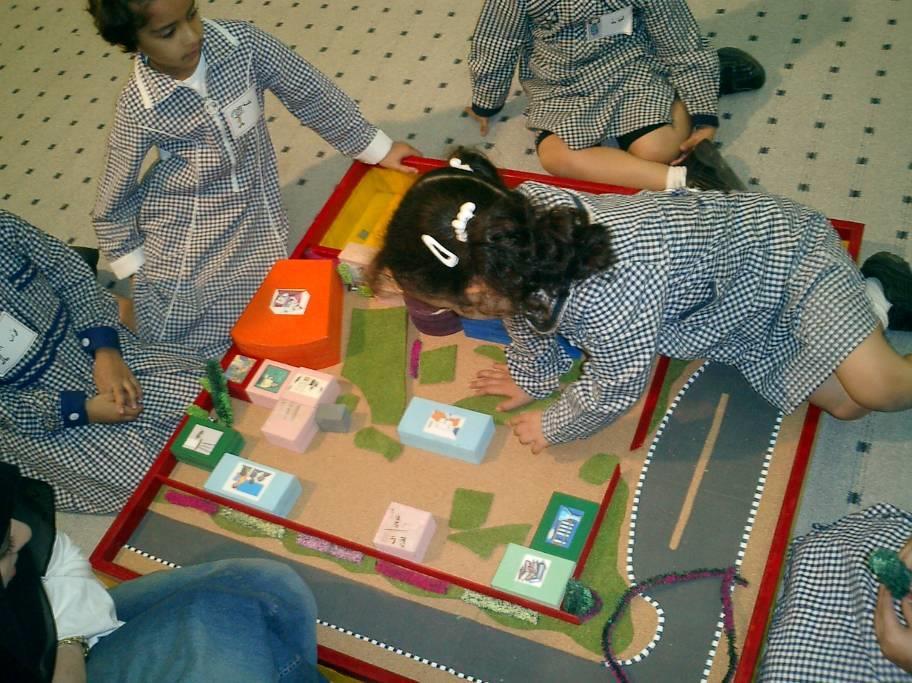Research Methods: Standardized Questionnaire
Research Methods: Standardized
Questionnaire
• Standardized questionnaires are used to discover regularities among groups of people by comparing answers to the same set of questions asked of a large number of people.
• Questionnaires can be delivered by mail, email, online or administered over the phone or in person by interviewers trained to ask the questions in the same way.
• Questionnaires provide a useful data when investigators begin with a very well defined problem, knowing what major concepts and dimensions they want to deal with.
• Analysis of questionnaire responses can provide precise numbers to measure variables, e.g. degrees, percentages, .etc.
Research Methods: Standardized Questionnaire
The Use of Questionnaires
– Begin with hypotheses about which attributes relate to each other.
(Example: Type of previous dwelling influences satisfaction with apartment living.)
– Carry out particularly thorough preliminary diagnostic research. Use focused interviews and observation methods to determine how people similar to intended questionnaire respondents define a situation: what is important; what names they use for places and things; the types of answers they give.
–
Structure and develop the questionnaire to include all the variables.
– Pretest the questionnaire with more people like the expected respondents by administering it to self-conscious respondents while asking them to comment on it.
– Administer the questionnaire and analyze the results.
Research Methods: Standardized Questionnaire
Qualities of the Method
–A great deal of findings in a short time.
–Resulting quantitative data often convince other people of arguments qualitative data do not.
Control of the investigation:
–How it begins
–The ordering of questions and answers
–How it ends
–Efficiency, cost, and time
–Repetition and ease of comparison of responses from different responses and with other situations
–Build cumulative body of data
Research Methods: Standardized Questionnaire
Intrusiveness
–Respondents can change and distort answers
–Respondents can be directed by the questions themselves
Convincing rigor
–Quantitative analysis of questionnaire data contributes precision to knowledge
–Make research convincing to others
Research Methods: Standardized Questionnaire
1. Rapport (agreement)
• Research results are as valid as the relationship between interviewer and respondent is open and non-defensive. Rapport can be established by introducing oneself and the purpose of the interview clearly, honestly, realistically, and without threatening the respondents. Start the questionnaire with questions that request positive answers to achieve friendly atmosphere.
2. Conditioning
• Early questions can influence the way respondents answer later ones. A good rule to follow is to go from general to specific questions.
3. Fatigue
• Respondents get tired after half an hour or so.
• To maximize information and minimize fatigue, try to group questions relating to a topic
• Avoid confusing respondents with irrelevant questions.
•
Research Methods: Standardized Questionnaire
Precoding Responses
–Open ended questions (free-responses) are time consuming and costly to analyze.
–Precoding is to partition possible response alternatives into a set of categories for respondents to choose from.
• Nominal
– Yes and no
– Gender
– Religion
• Ordinal
– Information (age)
– Attitudes (opinion)
– Meaning
• Rank-ordering of Items
Research Methods: Standardized Questionnaire


Ordinal Questions


Information
Attitudes Meaning
Research Methods: Standardized Questionnaire
Rank-ordering of Items

Research Methods:
Standardized Questionnaire
Visual Responses
– Some cognitive, expressive, and perceptual information about respondents’ physical surroundings may be better expressed visually than verbally, through nonprecoded techniques, such as freehand area maps, base-map additions, drawings, photographs taken by respondents and games.
– Cognitive maps are the mental pictures of the surroundings that people use to structure the way they look at, react to, and act in their environment. If designers know how people who use their environments see them, they can better control the side effects of design decisions.
• Freehand Maps (Kevin Lynch)
• Additions to Base Maps (Zeisel and Griffin)
• Drawings (Sanoff and Barbour)
• Photographs
Research Methods: Standardized Questionnaire
Freehand maps

Drawings

Research Methods: Standardized Questionnaire
Additions to Base Maps

Research Methods: Games
Research Methods: Games
Games
–
To develop games through which respondents express themselves by making a series of linked choice.
– One of the oldest such games is Wilson’s “Neighborhood Game” .
Alternative degrees of attributes such as neighborhood physical quality and sanitation services each have a price tag attached. Respondents are given a set of chips representing the total amount of money they can spend to “buy” the amenities on the game board. With the amount of play money they have, they are forced to chose among attractive alternatives, not all of which they can afford. Their final judgements express not a linear series of individual choices but a balanced set of simultaneous ones.
– Another game developed by Zeisel and Griffin is the “Dwelling Unit Floor Plan game” in which respondents make a series of simple design decisions to develop their housing unit.
Research Methods: Gaming Simulation
Architectural Theory 1: Human Environmental Factors
 Dr. Yasser Mahgoub
Dr. Yasser Mahgoub
Research Methods: Gaming Simulation

Architectural Theory 1: Human
Environmental Factors
Dr. Yasser MahgoubResearch Methods: Gaming Simulation
Architectural Theory 1: Human Environmental Factors
 Dr. Yasser Mahgoub
Dr. Yasser Mahgoub
Research Methods: Gaming Simulation
Architectural Theory 1: Human Environmental Factors
 Dr. Yasser Mahgoub
Dr. Yasser Mahgoub
Research Methods: Gaming Simulation
Architectural Theory 1: Human Environmental Factors
 Dr. Yasser Mahgoub
Dr. Yasser Mahgoub
Research Methods: Gaming Simulation
Architectural Theory 1: Human Environmental Factors
 Dr. Yasser Mahgoub
Dr. Yasser Mahgoub
Research Methods: Gaming Simulation
Architectural Theory 1: Human Environmental Factors
 Dr. Yasser Mahgoub
Dr. Yasser Mahgoub
Research Methods: Gaming Simulation
Architectural Theory 1: Human Environmental Factors
 Dr. Yasser Mahgoub
Dr. Yasser Mahgoub
Research Methods: Gaming Simulation
Architectural Theory 1: Human Environmental Factors
 Dr. Yasser Mahgoub
Dr. Yasser Mahgoub
Research Methods: Gaming Simulation
Architectural Theory 1: Human Environmental Factors
 Dr. Yasser Mahgoub
Dr. Yasser Mahgoub
Research Methods: Gaming Simulation
Architectural Theory 1: Human Environmental Factors
 Dr. Yasser Mahgoub
Dr. Yasser Mahgoub









